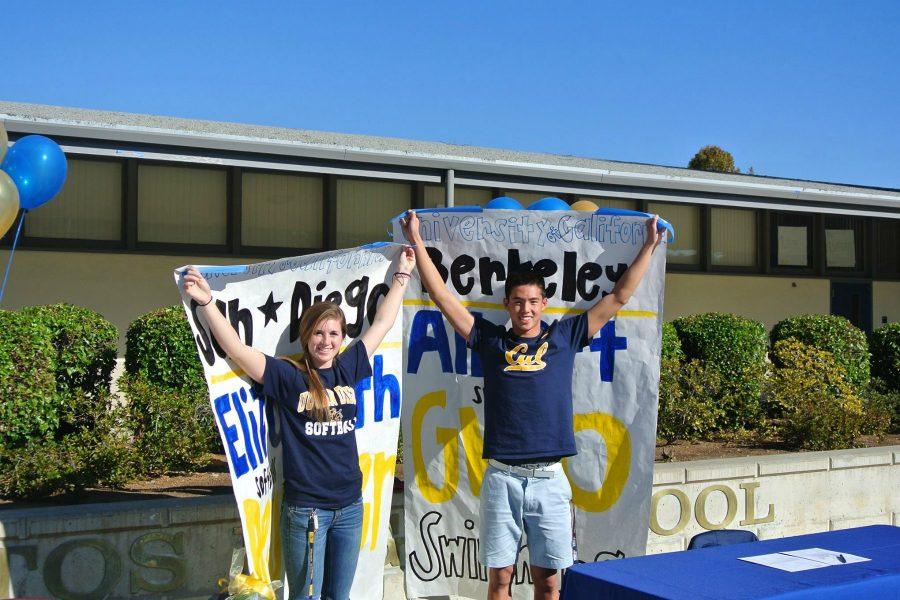School Should Do More to Facilitate the Recruitment Process
Excited and a little bit nervous that a college coach just sent him an email, a high school athlete quickly realizes there is one important question he doesn’t know the answer to: What next? The recruiting process is a journey full of NCAA regulations and eligibility requirements that can be quite the handful for high school athletes who don’t entirely understand what to do after initial contact.
Los Altos High School should help students more in the recruiting process by helping them understand how the process works, and giving them the necessary information they need to begin thinking about the possibility of recruitment. Having the athlete handle a majority of the process is a good experience for them, but the school should let student athletes know that there is a person or place within the school that they can go to to ask questions about the process and get advice when things get too confusing.
The college recruiting process varies greatly between sports, NCAA divisions and individual athletes, but generally begins some time during sophomore year, when colleges begin sending questionnaires and informational letters to potential recruits. Some athletes may receive emails during this time, but for the most part these are only general letters. The NCAA does not allow college coaches to call or text high school athletes until their late junior year, which is when the majority of the recruiting process takes place.
At the point when college coaches begin to directly call and contact athletes, athletes will often have the chance to go on official visits to colleges that are recruiting them in order to take a closer look at the school. Throughout the process athletes are also expected to send colleges their test scores and meet NCAA eligibility requirements, which include GPA minimums and certain college preparatory class requirements.
The process is quite the handful, and piled on top of schoolwork it can become an additional source of student stress.
“[The recruiting process adds to] the stress levels [of school], because when you’re a [recruited] athlete your high school experience is completely different from that of regular students,” recruited Berkeley swimmer senior Albert Gwo said. “There is a lot of stress trying to figure everything out with all the deadlines because nobody can help you.”
Another complication of the recruiting process is that different athletes are recruited at different levels. Some athletes might be pursued by multiple coaches and receive many emails and phone calls, while others may not be approached by coaches and have to send out emails and do the contacting themselves. Both athletes have potential to be recruited, and in both cases there is a lot of work the student has to do.
“I had to do [a lot of work] on my own,” Albert said. “Even though it was mostly coaches contacting me, it was still hard to get all of the paperwork done and get all of the transcripts sent into the college before you had to commit.”
The potential stress caused by the sometimes confusing recruiting process is something the school could easily help remedy. Having counselors who know the specifics of the recruiting process could be extremely beneficial. A lot of the process is understanding deadlines and eligibility requirements, so having somebody who can easily explain the process would give student athletes a starting point to work from.
“At the end of the recruiting process looking back, it was [more complicated than] it should have been, and having help would have been nice,” Albert said.
The school doesn’t necessarily need to walk the athlete through the process step by step. Having the athlete take responsibility for the process is definitely a beneficial experience for them, but having information available, and having the resources to help students understand the process and know how to move forward could make it much easier and much less stressful.



